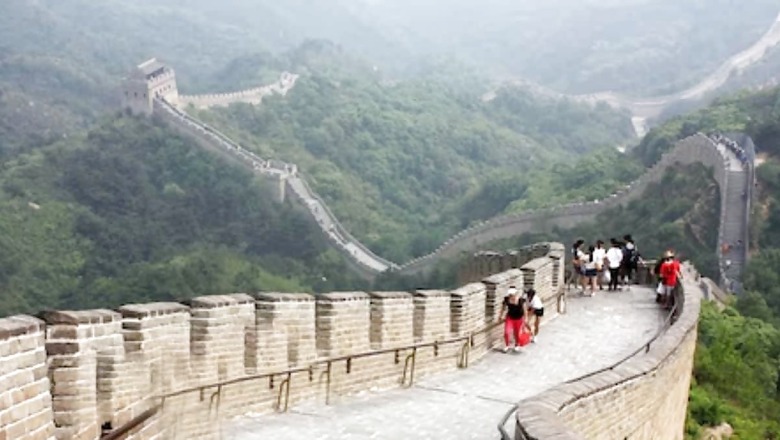
views
The Great Wall of China is one of the most amazing pieces of architecture and the largest man-made project in the world. The Wall extends 5 km north of Shanhai Pass, a fortress built in the Ming Dynasty, where it juts (to stick out further than the surrounding surface) into the sea. At this fortress, the Great Wall starts or ends, depending on how the people look at it, and from here, it stretches to Lop Lake (the second largest inland lake in China) in the west. This lake is situated along an arc that roughly delineates the southern edge of Inner Mongolia — a length of approximately 8,850 km. This part of the wall is known as Laolongtou or Old Dragon’s Head because it resembles a long dragon dipping his head drinking water from the sea. Old Dragon’s Head extends about 23 m out into the Bohai Sea and was built in 1579 during the Ming dynasty. The Ming Dynasty ruled China from 1368 AD (Anno domini) to 1644 AD.
Many false claims have been made regarding The Great Wall of China. There were claims that it is the only man-made structure visible from space. This belief existed for nearly 300 years. In 1754, English scientist Rev William Stukeley first suggested that the Great Wall of China may be visible from the Moon due to its massive length. Similarly, in the 19th century, Italian astronomer Giovanni Schiaparelli observed large channels on Mars. These were mistranslated into English as “canals.”
NASA’s Apollo mission, however, disproved this false claim. Neil Armstrong, the first man to walk on the Moon, was asked in many interviews if he saw the wall. Armstrong said that he saw no man-made structures from the lunar surface and only saw continents, lakes and scattered spots of white on blue. The Apollo 12 Lunar Module Pilot and the fourth person to walk on the Moon, Alan Bean, also made a similar claim. Alan said, “The only thing you can see from the Moon is a beautiful sphere, mostly white, some blue and patches of yellow, and every once in a while some green vegetation. No man-made object is visible at this scale.”













Comments
0 comment